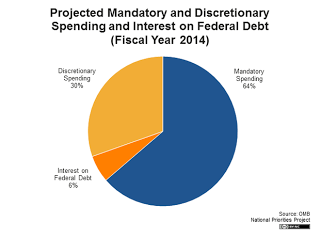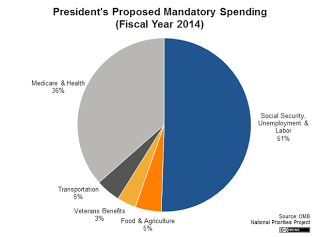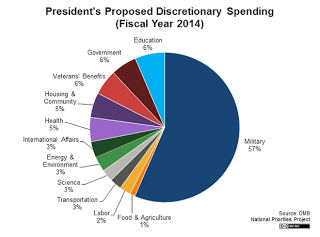


It should be clear from the charts above that getting control over U.S. spending will require addressing both mandatory and discretionary spending.
Mandatory spending accounts for almost two thirds of the budget. Without addressing it, we get nowhere fast. However, Social Security and Medicare come under mandatory spending and politicians have been loath to address these programs, and for good reason. Even TEA Party people have made it clear that they want the government to, "keep its hands off Medicare!"
Unfortunately, things won't get any easier for our political "leaders." The latest census forecast says the number of Americans 65 and older will double over the next 30 years to 80 million. On top of that, the under-65 crowd will grow more slowly than estimated four years ago. As a result, the percentage of Americans 65 and older will increase from 13 percent in 2010 to 21 percent by 2040. Bad news for those having to pay into the system, because benefits will have to be decreased and/or contributions will have to be raised to ensure the system remains viable.
On the discretionary piece of the pie, military spending seems an obvious target. After all, the U.S. spends more on Defense than the next 13 nations COMBINED! But every military program has its congressional proponent, and cutting enough to make a difference will hurt in someone's backyard, and they'll balk. Again.
Politically, there are no easy answers. Practically, there are answers. Can we please have a reasonable debate about how, over the long term, we can ensure sustainable deficits and a healthy economy in which no one demographic; the elderly, the poor, the middle class, shoulders an unfair burden?

